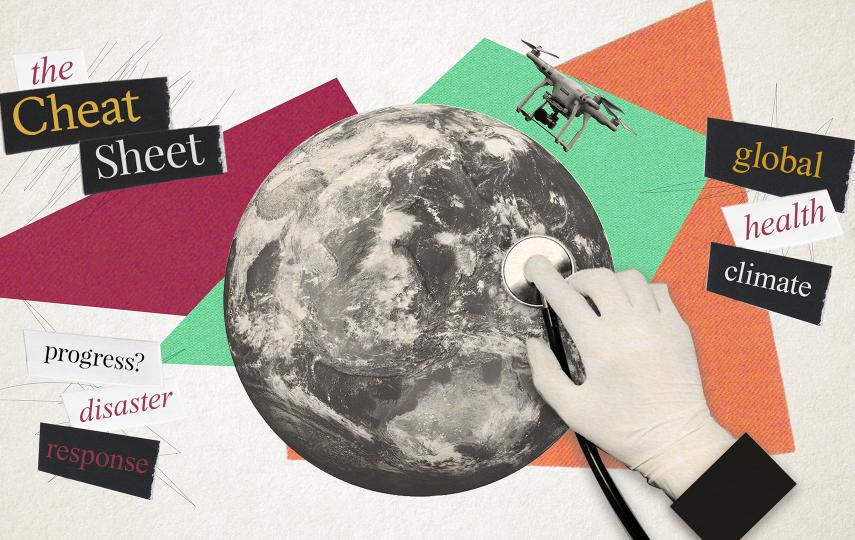As countries “reopen” in this ongoing COVID-19 pandemic, most do so in the dark, using either poor and inaccurate data or worse – no data at all – to inform policies that can in some cases decide who lives and dies.
The common phrase, data over dogma, is often heard from scientists and citizens alike. But is there enough data to drive informed decision-making?
Many countries have lacked evidence-based COVID-19 policies due to the scarcity of data. Good testing data remains elusive, as even some of the world’s wealthiest countries have been slow to increase testing and obtain good estimates of COVID-19 prevalence.
While there is no official standard COVID-19 testing rate or proportion, countries that have managed their outbreaks better than others – like Germany, New Zealand, and the United Arab Emirates – tested high numbers of their population each day.
The World Health Organisation suggests several conditions should be met before countries ease restrictions, but the first is to be able to confirm that transmission has been controlled.
“The common phrase, data over dogma, is often heard from scientists and citizens alike. But is there enough data to drive informed decision-making?”
As governments far and wide face growing pressure to reopen their societies but also lingering gaps in adequate data, we put forward four suggestions to form evidence-based metrics to guide the application and easing of public health measures to combat COVID-19.
- 1. Set up a strong surveillance strategy now.
- It’s impossible to test everyone in the country at once. But to understand what is actually going on, continuous randomised population testing, sentinel surveillance, and serology studies are all good ways to understand local infection rates. This is the only way for people to understand their individual risks. Depending on a number of factors, especially budgets, each country should choose different surveillance strategies.
- 2. The data that does exist must be used to inform/or create metrics.
- In order to increase the credibility of data, different data sources should be used to compose metrics. This technique is called triangulation. For example, in addition to the tracking of COVID-19 deaths in hospitals, Ecuadorian officials conducted verbal autopsies to capture potential deaths due to COVID-19 for individuals who were not tested. These metrics should then be used to direct resources and inform prevention and control strategies (e.g. school closures, lockdowns, shelter-in-place orders).
- 3. Focus on local data.
- What we have learned from regions, states, and countries that have been more successful than others in managing the epidemic is that the more granular and local the data, the more useful.
- 4. Collect data on all high-risk and vulnerable populations.
- This is not just about care homes and cancer wards. We must also understand the risk factors for – and infection rates of – healthcare and “public-facing” essential workers. Transmission in high-risk populations could fuel a second wave of the pandemic. Countries must systematically test and monitor these groups to quickly identify and break new transmission chains. This will protect the most vulnerable and provide information to the public that can open the economy while keeping everyone safe.
Uninformed public health policies have threatened public trust and economies in rich countries, while elsewhere it can be a threat to livelihoods and lives. In all societies, we see that the most vulnerable, the poorest, and the marginalised have suffered the most during the response to COVID-19.
Many countries have large parts of their society that earn a daily wage as workers in the informal economy, which is why the mimicking of Western measures to combat COVID-19 (e.g. shutting schools and mandating nationwide lockdowns) has sometimes resulted in more dangerous outcomes for already impoverished and struggling populations.
In Zimbabwe, a small country experiencing the second highest inflation worldwide and 90 percent unemployment, lockdowns were extended indefinitely when the country reached 46 reported COVID-19 cases with four attributable deaths.
In Cambodia, with a population of 16 million, there have been 128 reported COVID-19 cases and zero deaths. Yet measures such as school closures were recently extended to November so the country could remain vigilant against an impending second wave – even though the first “wave” was incredibly minimal and the health system was not overstretched.
In other places, the enforcement of restrictive measures themselves has exacerbated existing disparities and oppressive systems and resulted in more individual harm or even death than COVID-19.
In the United States and the UK, black citizens were disproportionately arrested or fined for breaking lockdown; in South Africa, more than 20,000 cases have been opened for people who didn’t comply with lockdown orders, and courts have recently ruled that some measures that were imposed – such as banning the sale of alcohol and cigarettes – had no rational connection to slowing the spread of infection.
Alternatively, now that more data is available but still not used in many countries, the easing of lockdowns also presents a risk to the most vulnerable in our societies. In Brazil, where the highest levels of government continually dismiss the seriousness of COVID-19, there are reports of mass graves and triple the number of deaths than normal.
And while England's testing capability has increased, it still lacks local testing and contact tracing – even as the country continues to move ahead with school reopenings, to the ire of many parents and scientists.
Many political leaders fear that public health measures to protect their populations from COVID-19 will be criticised by their opponents, but the truth is – whether a country decides to reopen or keep closed – this virus will be with us for a while.
And those being most harmed by decisions that governments claim are for their citizens’ own good deserve their leaders to generate useful data and use metrics that balance the true risks of COVID-19 for their communities.







